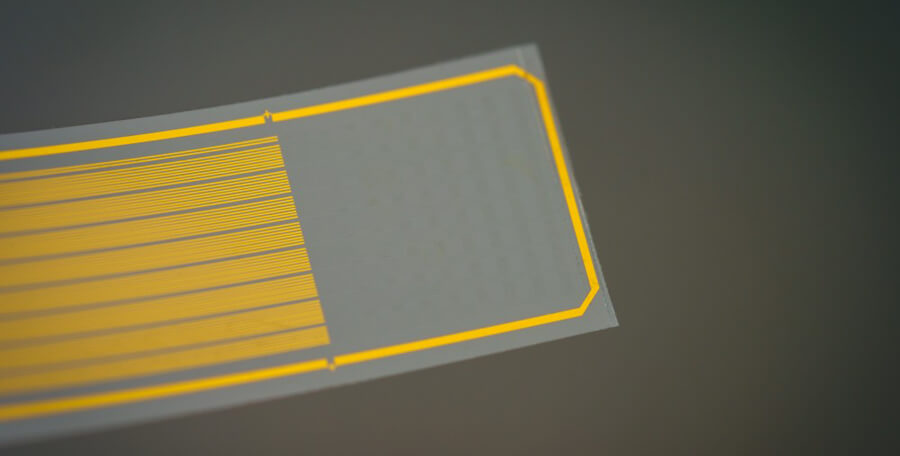BY SIMON FROST | 17 JANUARY 2024
Researchers at the University of California San Diego, US, have unveiled a neural implant that peers deep into the brain from its surface.
This transparent, flexible strip packed with graphene electrodes opens a new frontier in brain-computer interfaces (BCIs), offering high-resolution data on deep neural activity without invasive procedures.
Published in January in Nature Nanotechnology, the study could mark a significant leap forward – bridging the gap between current surface arrays, which are limited to shallow sensing; or deep-diving needle electrodes prone to tissue damage.
‘Our technology extends the reach of neural recordings,’ explains Duygu Kuzum, the study’s senior author and a professor at UC San Diego’s Jacobs School of Engineering. ‘By capturing both electrical and calcium activity, we infer deep brain activity even with a surface implant.’
The key lies in the implant’s innovative design. A mesh of graphene electrodes conforms to the brain’s surface, while micrometre-thin wires connect them to a circuit board. This transparency allows simultaneous electrical recordings and two-photon imaging of calcium spikes in deeper neurons.

When placed on the surface of the brain, this thin, flexible implant enrables researchers to capture high-resolution information about neural activity deep within the brain without damaging delicate tissue. Image: David Baillot/UC San Diego School of Engineering
The researchers demonstrated the technology’s power in transgenic mice. They trained a neural network to predict deep calcium activity from surface electrical signals, revealing activity patterns in both large and individual neurons at various depths.
‘This breakthrough overcomes imaging limitations, enabling long-term, freely moving experiments,’ says Mehrdad Ramezani, co-first author and a PhD student in Kuzum’s lab. ‘This opens doors to understanding real-world scenarios and complex behaviours.’
Several factors contribute to the implant’s success. ‘High-density, transparent graphene electrodes and machine learning are key,’ says Kuzum. ‘They improve signal quality and unlock deep activity prediction from surface signals.’
Eliminating traditional opaque materials also allows uninterrupted imaging during experiments. ‘This seamless integration of recording and imaging provides invaluable data,’ says Kuzum.
Fabricating such thin wires presented a challenge, but the researchers were able to ensure conductivity and functionality by doubling the graphene layers. They also achieved record electrode density by shrinking them while enhancing conductivity via platinum nanoparticles.
The team’s next steps involve testing in larger animals – and ultimately, humans. They also aim to share the technology with researchers worldwide, accelerating fundamental neuroscience research.
‘This technology has vast potential,’ concludes Kuzum. ‘We are excited to contribute to unlocking the mysteries of the human brain and shaping the future of BCIs.’





